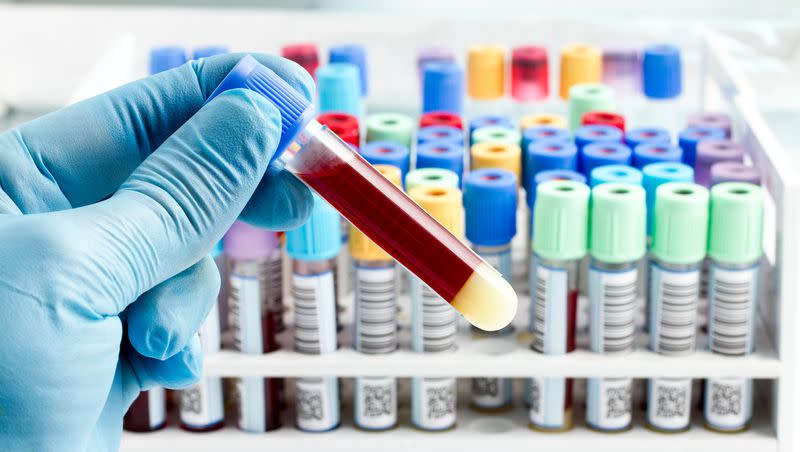Can a blood test tell how your organs are aging — and your future risks?

Organs age at different rates, so your heart could outlive your liver or your kidney. Stanford Medicine researchers say about 20% of “reasonably healthy adults” 50 and older pack around at least one organ that’s growing older faster than the rest of them.
That means greater risk of diseases associated with that organ, including complications and even death. But the researchers also believe a simple blood test could identify those organs, leading to treatments and prevention measures even before any symptoms show up.
Their study, based on data from 5,678 people, was published online Dec. 6 in the journal Nature.
“We can estimate the biological age of an organ in an apparently healthy person,” said the study’s senior author, Tony Wyss-Coray, professor of neurology, in a Stanford news release. “That, in turn, predicts a person’s risk for disease related to that organ.”
“Numerous studies have come up with single numbers representing individuals’ biological age — the age implied by a sophisticated array of biomarkers — as opposed to their chronological age, the actual numbers of years that have passed since their birth,” said Wyss-Coray, who also directs the Phil and Penny Knight Initiative for Brain Resilience.
The Stanford team’s research allowed them to assign numbers for the heart, fat, lung, immune system, kidney, liver, muscle, pancreas, brain, vasculature and intestine.
Very few — about 1 in 60 — had more than one organ aging fast, they found. Wyss-Coray said for those folks who did have more than one, risk of death was about 6.5 times greater than those with no organ aging quickly.
Per the release, “Using commercially available technologies and an algorithm of their own design, the researchers assessed the levels of thousands of proteins in people’s blood, determined that nearly 1,000 of those proteins originated within one or another single organ, and tied aberrant levels of those proteins to corresponding organs’ accelerated aging and susceptibility to disease and mortality.”
Related
Drug shortages put Americans in a hard spot. What’s on the list?
Forget what you were doing? Here are ways to improve short-term memory
Researchers also trained a machine-learning algorithm to guess a person’s age based on levels of close to 5,000 proteins, then checked its accuracy in 4,000 people who were fairly nationally representative.
Though they noted some synchronous aging among organs, the researchers said that a person’s individual organs “largely went their separate ways along the aging path.”
They said that of the 11 organs studied, the gap between actual age and what the algorithm found was “significantly associated“ with risk of death over 15 years’ follow-up. The exception was the intestine.
Depending on which organ was aging faster, the risk of mortality over 15 years increased between 15% and 50%, compared to people of the same chronological age without the faster-aging organ.
For the heart, for example, the risk was 2.5 times higher. “Older” brains were 1.8 times more apt to show cognitive decline over five years. “Accelerated brain or vasculature aging — either one — predicted risk for Alzheimer’s disease progression as well as the best currently used clinical biomarkers do,” the release said.
MedPage Today wrote, “Notably, heart attack and Alzheimer’s disease, among other diseases, were associated with accelerated aging in ‘virtually all organs,’ while others were only associated with aging of one organ or a subset of organs.”
The article said, “Particularly significant at the population level were aged kidneys. Hypertensive individuals had kidneys that were, on average, a year older than their same-age peers, while people with diabetes had kidneys that were about 1.3 years older. People with atrial fibrillation had hearts 2.8 years older, and those who had a heart attack had hearts that were 2.6 years older.”
If the findings hold on a large scale, Wyss-Coray said, a blood test might allow treatment of people before they ever get sick.
He and colleagues hope to commercialize the findings and a patent application has been filed. They note that researchers from Washington University; the University of California, San Francisco; the Albert Einstein College of Medicine; and Montefiore Medical Center contributed to their work.

